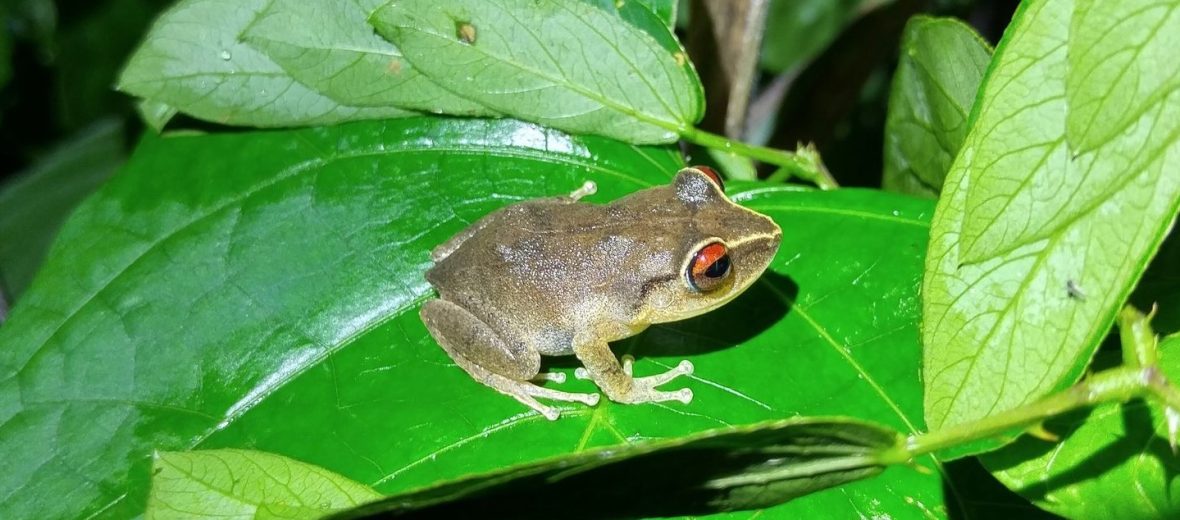
The common coquí frog, aka coquí, is native to the islands of Culebra, Puerto Rico, and Vieques. But they have been introduced to several other locales, like east Hawaii; from Glenwood to Kalapana, and throughout North Hilo. They have also been discovered in California. These noisy amphibians currently only face the threats of pollution and other invasive species. Their numbers are also increasing in locales where they are considered invasive. Thus, they are listed as Least Concern by the IUCN. This article is on special request from Eleanor.
First the Stats…
Scientific name: Eleutherodactylus coqui
Weight: Up to 2+ ounces
Length: Up to 2+ inches
Lifespan: Up to 6+ years
Now on to the Facts!
1.) These frogs belong to the family Eleutherodactylidae (direct-developing frogs native to northern South America, the Caribbean, and southernmost North America).
2.) Coquís are nocturnal (active at night).
3.) In an interesting example of a sex difference in a sensory system, the call of the male coquí signals either male or female, based on the portion of their call generated. For example, the “co” part of their call signals to other males to stay away. The “kee” portion signals to females the intent to breed.
4.) The frog’s size is directly correlated by elevation. The higher the elevation, the larger the frog.
5.) Coquís were introduced to the Dominican Republic, Louisiana, and Florida, but these populations have been reported as being eradicated.
But wait, there’s more on the common coquí frog!
6.) In locations where their populations exceeded 51,000 per hectare, these little frogs can take out up to 300,000 invertebrates a night!
7.) The control/removal of these invasive frogs costs Hawaii upwards of $3,000,000 per year!
Did you know…?
Coquí frogs are on the list of the 100 most invasive species.
8.) The call of these amphibians reaches up to 73 dB! So, locations that are heavily populated with these frogs causes a decline in home buying, due to the sheer noise level, at night.
9.) Their presence is directly affected by humidity levels. When the humidity increases, they climb into trees and shrubs. When the humidity drops, they descend to the ground.
10.) Coquí frogs prey on crickets, spiders, moths, snails, and even smaller frogs.
But wait, there’s still more on the common coquí frog!
11.) While guarding the nest, males will sometimes feast on their egg mass.
12.) Even though they can breed all year long, their peak breeding takes place during the wet season.
13.) Females typically lay up to 40 eggs, up to 6 times per year, at about 8-week intervals.
14.) Unlike other frogs that rely on water to lay their eggs, these little critters lay their eggs in various locations, like palm trees or abandoned bird nests.
15.) They also skip the tadpole phase and develop limbs while still in the egg.
16.) The froglets are born with the remnants of a tail, that is later absorbed. They reach sexual maturity in 1 year.
Now a Short Common Coquí Frog Video!
Be sure to share & comment below! Also, check out the Critter Science YouTube channel. Videos added regularly!
Want to suggest a critter for me to write about? Let me know here.



